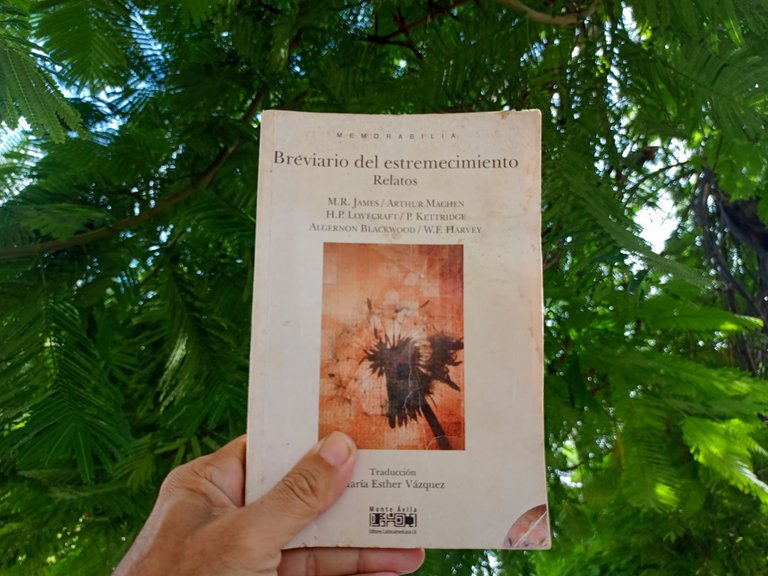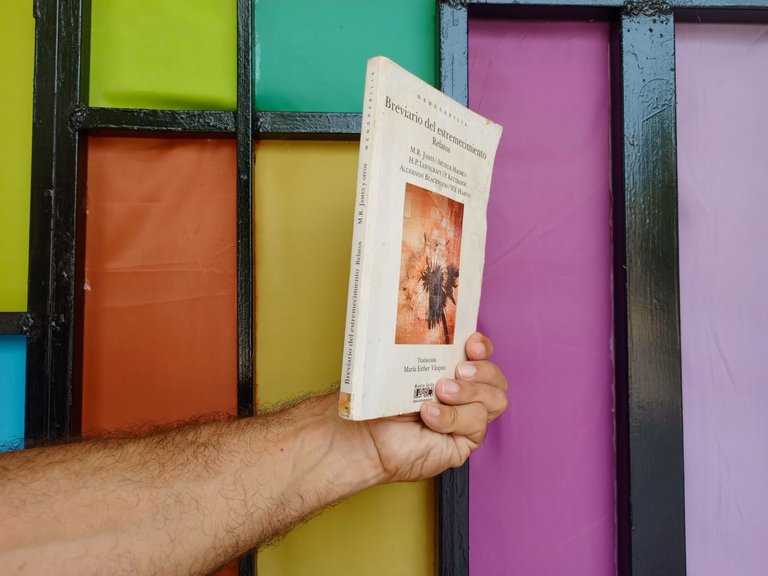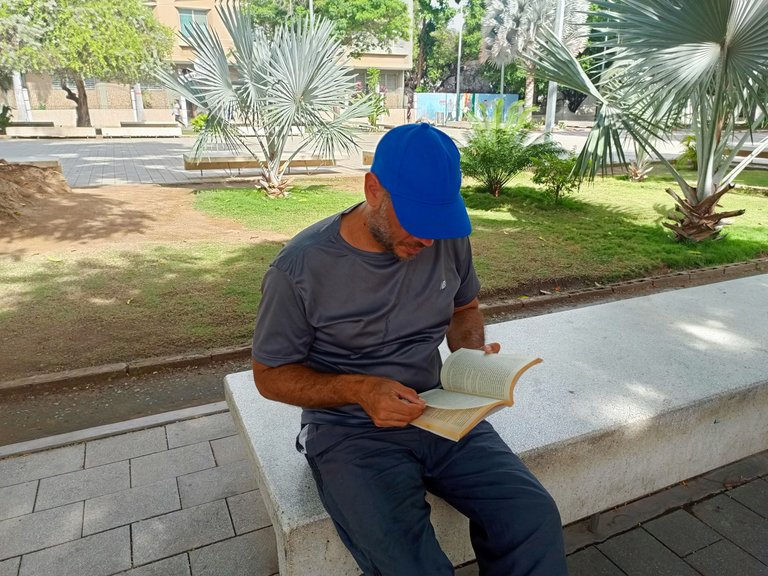A few days ago I had the pleasure of reading Edgar Allan Poe's narrative and I decided to investigate other authors of the horror genre who are contemporary with the great American writer. For this reason I got "Breviario del estremecimiento", an anthology of short stories by selected narrators, most of them English, where terror is created from diverse and interesting proposals.
There appears the story "The Number 13", by M.R. James, where the narrator seeks the complicity of his ideal reader because his story is based on superstition. He not only addresses the cultural perception that may drag the number 13 as a reference of misfortunes, but also questions those who cling to such belief.

The narrator's ability to suggest, to propitiate curiosity through his discourse is remarkable. The protagonist, convinced of the power of superstition, assures us that there is a room number 13 in the hotel where he is staying.
Gradually, the inexplicable acquires another hue and becomes disturbing. The mystery coexists between logical reasoning and the belief in supernatural entities that appear in the dark, which still persists in our time, despite the available technology.

On the other hand, in "The Empty House" by A. Blackwood, the narrative immerses us in the classic abandoned and gloomy house that the media tradition has given it the adjective "haunted". The reader is placed in the bowels of a house that was the scene of a passionate murder. The characters, full of fear and anxiety, seek to unravel secrets, while the atmosphere is tense, conducive to conceive psychological terror. The story also invites us to believe that the house can cross the border between characters and space, and therefore possesses the power to project its fears.
Another story that stands out for its aesthetic proposal, besides dosing the mystery and terror to maintain the tension from beginning to end, is "From three to three-thirty" by P. Ketiridge. Around a distressing loneliness, Helen Corey unfolds, the narrator being the piece that skillfully plays with the reader to make him doubt what is happening. The literary resources are presented in various ways with the aim of settling in the reader's perception and from there generate uncertainty.

One of the peculiarities of this story is that the narrator directly questions the characteristic elements of horror stories, emphasizing the presence of ghosts and entities from another dimension in those cases that science and logic cannot yet justify.
The suggestion that it is the human mind that is responsible for granting life to the nonexistent is also raised in this tale. The character of Helen Corey is there as an excuse to develop a very particular story in which she may die abruptly. Here the narrator does not use a timeline but goes back to recount the events.

It is somewhat surprising that two centuries ago an author would propose a story that is organized to destabilize the reader from various perspectives, since internally he conceives a sense of uneasiness while trying to make the reader modify his thoughts about the unknown.
Versión en Español
Algunos días atrás tuve el gusto de leer la narrativa de Edgar Allan Poe y me propuse indagar en otros autores del género del horror que sean contemporáneos con el gran escritor norteamericano. Por tal razón conseguí "Breviario del estremecimiento", una antología de cuentos, de selectos narradores, la mayoría ingleses, donde el terror se crea a partir de diversas e interesantes propuestas.
Allí aparece el relato "El número 13", de M.R. James, donde el narrador busca la complicidad en su lector ideal porque sustenta su historia en la supertición. No solo aborda la percepción cultural que pueda arrastrar el número 13 como referente de desgracias, sino que cuestiona a quienes se aferran a tal creencia.

La habilidad del narrador para sugerir, para propiciar la curiosidad a través de su discurso es destacable. El protagonista, convencido del poder de la supertición, asegura que existe una habitación número 13 en el hotel donde está pernoctando.
Paulatinamente, lo inexplicable adquiere otro tinte y se transforma en inquietante. El misterio convive entre el razonamiento lógico y la creencia en entes sobrenaturales que aparecen en la oscuridad, lo que todavía persiste en nuestro tiempo, a pesar de la tecnología disponible.

Por otra parte, en "La casa vacía" de A. Blackwood, la narrativa nos sumerge en la clásica casa abandonada y lúgubre que la tradición mediática le ha concedido el adjetivo de "embrujada". El lector es ubicado en las entrañas de una vivienda que fue escenario de un asesinato pasional. Los personajes, portadores de miedo y ansiedad, buscan esclarecer secretos, en tanto la atmósfera es tensa, propicia para concebir el terror psicológico. La historia también nos invita a creer que la casa puede transitar la frontera entre personajes y espacio, así que por lo tanto posee la facultad de proyectar sus miedos.
Otro relato que sobresale por su propuesta estética, además de dosificar el misterio y el terror para mantener la tensión de principio a fin, es "De las tres a las tres y media" de P. Ketiridge. Alrededor de una angustiante soledad, Helen Corey se desenvuelve, siendo el narrador la pieza que hábilmente juega con el lector para hacerle dudar de lo que está ocurriendo. Los recursos literarios se presentan de varias formas con el objetivo de instalarse en la percepción del lector y desde allí generar incertidumbre.

Una de las particularidades de este relato es que el narrador directamente cuestiona los elementos característicos de los cuentos de terror, haciendo énfasis en la presencia de fantasmas y entes de otra dimensión en aquellos casos que la ciencia y la lógica todavía no pueden justificar.
La sugerencia de que es la mente humana la responsable de conceder vida a lo inexistente también se plantea en este cuento. El personaje de Helen Corey está allí como excusa para desarrollar una historia muy particular en la cual puede morir de forma abrupta. Aquí el narrador no usa una línea temporal sino que regresa a contar los hechos.

Sorprende un tanto que hace dos siglos atrás un autor proponga un relato que se organiza para desestabilizar al lector desde varias perspectivas ya que internamente se concibe una sensación de inquietud mientras se persigue que el lector modifique sus pensamientos sobre lo desconocido.
✓Photos from my personal gallery, edited with Fotocollage.
✓Text translated with DeepL.
✓Fotos de mi galería personal, editadas con Fotocollage.
✓Texto traducido con DeepL.
@tipu curate 8
Upvoted 👌 (Mana: 0/70) Liquid rewards.
Gracias por el apoyo. Feliz día.